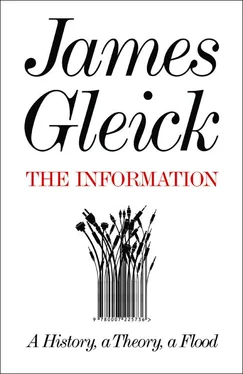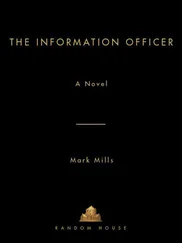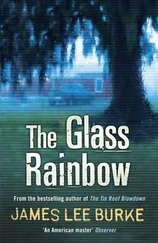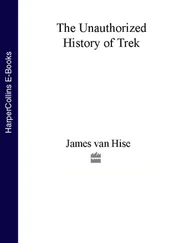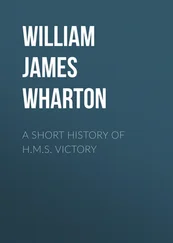The English language, spoken now by more than a billion people globally, has entered a period of ferment, and the perspective available in these venerable Oxford offices is both intimate and sweeping. The language upon which the lexicographers eavesdrop has become wild and amorphous: a great, swirling, expanding cloud of messaging and speech; newspapers, magazines, pamphlets; menus and business memos; Internet news groups and chat-room conversations; television and radio broadcasts and phonograph records. By contrast, the dictionary itself has acquired the status of a monument, definitive and towering. It exerts an influence on the language it tries to observe. It wears its authoritative role reluctantly. The lexicographers may recall Ambrose Bierce’s sardonic century-old definition: “ dictionary, a malevolent literary device for cramping the growth of a language and making it hard and inelastic.” Nowadays they stress that they do not presume (or deign) to disapprove any particular usage or spelling. But they cannot disavow a strong ambition: the goal of completeness. They want every word, all the lingo: idioms and euphemisms, sacred or profane, dead or alive, the King’s English or the street’s. It is an ideal only: the constraints of space and time are ever present and, at the margins, the question of what qualifies as a word can become impossible to answer. Still, to the extent possible, the OED is meant to be a perfect record, perfect mirror of the language.
The dictionary ratifies the persistence of the word. It declares that the meanings of words come from other words. It implies that all words, taken together, form an interlocking structure: interlocking, because all words are defined in terms of other words. This could never have been an issue in an oral culture, where language was barely visible. Only when printing—and the dictionary—put the language into separate relief, as an object to be scrutinized, could anyone develop a sense of word meaning as interdependent and even circular. Words had to be considered as words, representing other words, apart from things. In the twentieth century, when the technologies of logic advanced to high levels, the potential for circularity became a problem. “In giving explanations I already have to use language full blown,” complained Ludwig Wittgenstein. He echoed Newton’s frustration three centuries earlier, but with an extra twist, because where Newton wanted words for nature’s laws, Wittgenstein wanted words for words: “When I talk about language (words, sentences, etc.) I must speak the language of every day. Is this language somehow too coarse and material for what we want to say?” Yes. And the language was always in flux.
James Murray was speaking of the language as well as the book when he said, in 1900, “The English Dictionary, like the English Constitution, is the creation of no one man, and of no one age; it is a growth that has slowly developed itself adown the ages.” The first edition of what became the OED was one of the largest books that had ever been made: A New English Dictionary on Historical Principles , 414,825 words in ten weighty volumes, presented to King George V and President Calvin Coolidge in 1928. The work had taken decades; Murray himself was dead; and the dictionary was understood to be out of date even as the volumes were bound and sewn. Several supplements followed, but not till 1989 did the second edition appear: twenty volumes, totaling 22,000 pages. It weighed 138 pounds. The third edition is different. It is weightless, taking its shape in the digital realm. It may never again involve paper and ink. Beginning in the year 2000, a revision of the entire contents began to appear online in quarterly installments, each comprising several thousand revised entries and hundreds of new words.
Cawdrey had begun work naturally enough with the letter A , and so had James Murray in 1879, but Simpson chose to begin with M . He was wary of the A ’s. To insiders it had long been clear that the OED as printed was not a seamless masterpiece. The early letters still bore scars of the immaturity of the uncertain work in Murray’s first days. “Basically he got here, sorted his suitcases out and started setting up text,” Simpson said. “It just took them a long time to sort out their policy and things, so if we started at A, then we’d be making our job doubly difficult. I think they’d sorted themselves out by . . . well, I was going to say D, but Murray always said that E was the worst letter, because his assistant, Henry Bradley, started E, and Murray always said that he did that rather badly. So then we thought, maybe it’s safe to start with G, H. But you get to G and H and there’s I, J, K, and you know, you think, well, start after that.”
The first thousand entries from M to mahurat went online in the spring of 2000. A year later, the lexicographers reached words starting with me: me-ism (a creed for modern times), meds (colloq. for drugs), medspeak (doctors’ jargon), meet-and-greet (a N. Amer. type of social occasion), and an assortment of combined forms under media (baron, circus, darling, hype, savvy) and mega- (pixel, bitch, dose, hit, trend). This was no longer a language spoken by 5 million mostly illiterate inhabitants of a small island. As the OED revised the entries letter by letter, it also began adding neologisms wherever they arose; waiting for the alphabetical sequence became impractical. Thus one installment in 2001 saw the arrival of acid jazz, Bollywood, channel surfing, double-click, emoticon, feel-good, gangsta, hyperlink , and many more. Kool-Aid was recognized as a new word, not because the OED feels obliged to list proprietary names (the original Kool-Ade powdered drink had been patented in the United States in 1927) but because a special usage could no longer be ignored: “to drink the Kool-Aid: to demonstrate unquestioning obedience or loyalty.” The growth of this peculiar expression since the use of a powdered beverage in a mass poisoning in Guyana in 1978 bespoke a certain density of global communication.
But they were no slaves to fashion, these Oxford lexicographers. As a rule a neologism needs five years of solid evidence for admission to the canon. Every proposed word undergoes intense scrutiny. The approval of a new word is a solemn matter. It must be in general use, beyond any particular place of origin; the OED is global, recognizing words from everywhere English is spoken, but it does not want to capture local quirks. Once added, a word cannot come out. A word can go obsolete or rare, but the most ancient and forgotten words have a way of reappearing—rediscovered or spontaneously reinvented—and in any case they are part of the language’s history. All 2,500 of Cawdrey’s words are in the OED , perforce. For thirty-one of them Cawdrey’s little book was the first known usage. For a few Cawdrey is all alone. This is troublesome. The OED is irrevocably committed. Cawdrey, for example, has “ onust, loaden, overcharged”; so the OED has “loaded, burdened,” but it is an outlier, a one-off. Did Cawdrey make it up? “I’m tending towards the view that he was attempting to reproduce vocabulary he had heard or seen,” Simpson said. “But I can’t be absolutely sure.” Cawdrey has “ hallucinate, to deceive, or blind”; the OED duly gave “to deceive” as the first sense of the word, though it never found anyone else who used it that way. In cases like these, the editors can add their double caveat “ Obs. rare .” But there it is.
For the twenty-first-century OED a single source is never enough. Strangely, considering the vastness of the enterprise and its constituency, individual men and women strive to have their own nonce-words ratified by the OED . Nonce-word , in fact, was coined by James Murray himself. He got it in. An American psychologist, Sondra Smalley, coined the word codependency in 1979 and began lobbying for it in the eighties; the editors finally drafted an entry in the nineties, when they judged the word to have become established. W. H. Auden declared that he wanted to be recognized as an OED word coiner—and he was, at long last, for motted , metalogue , spitzy , and others. The dictionary had thus become engaged in a feedback loop. It inspired a twisty self-consciousness in the language’s users and creators. Anthony Burgess whinged in print about his inability to break through: “I invented some years ago the word amation , for the art or act of making love, and still think it useful. But I have to persuade others to use it in print before it is eligible for lexicographicizing (if that word exists)”—he knew it did not. “T. S. Eliot’s large authority got the shameful (in my view) juvescence into the previous volume of the Supplement.” Burgess was quite sure that Eliot simply misspelled juvenescence . If so, the misspelling was either copied or reprised twenty-eight years later by Stephen Spender, so juvescence has two citations, not one. The OED admits that it is rare.
Читать дальше
